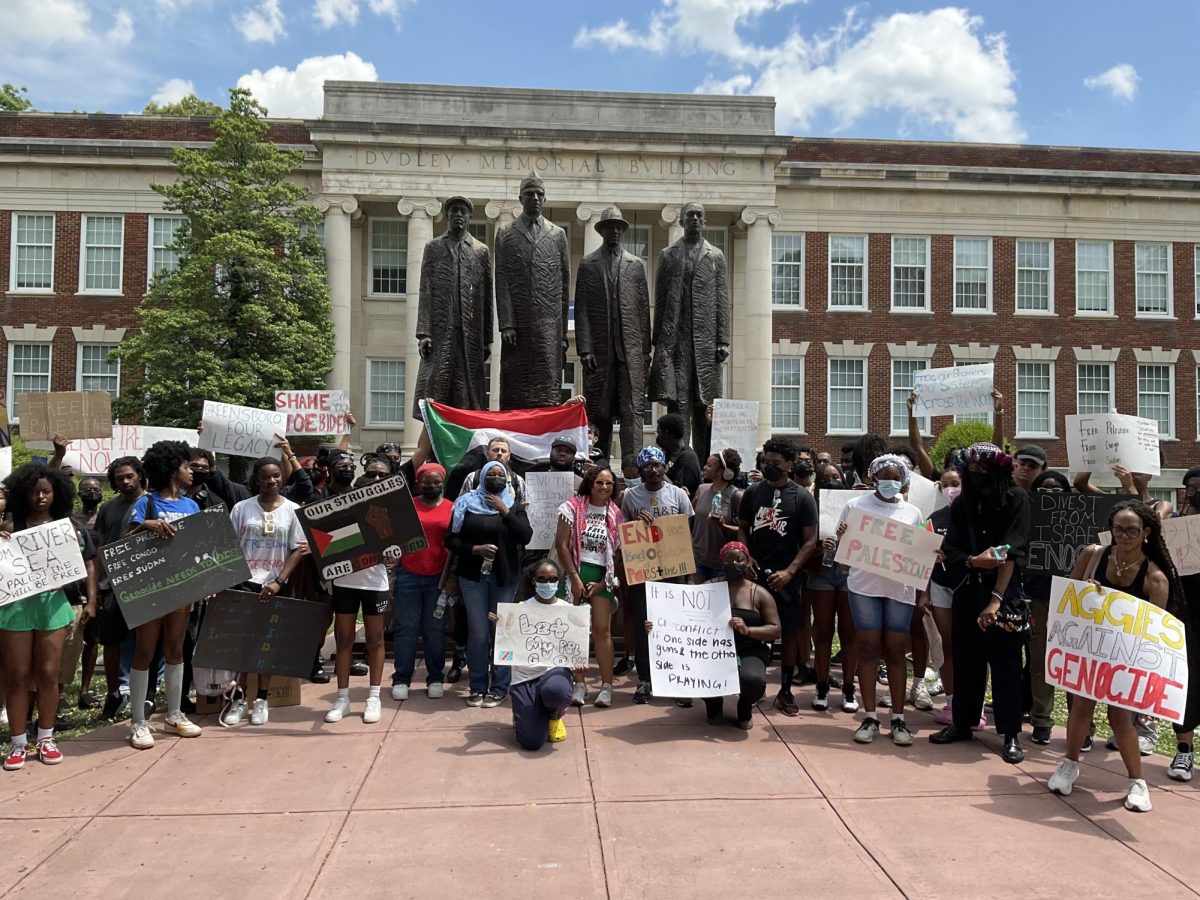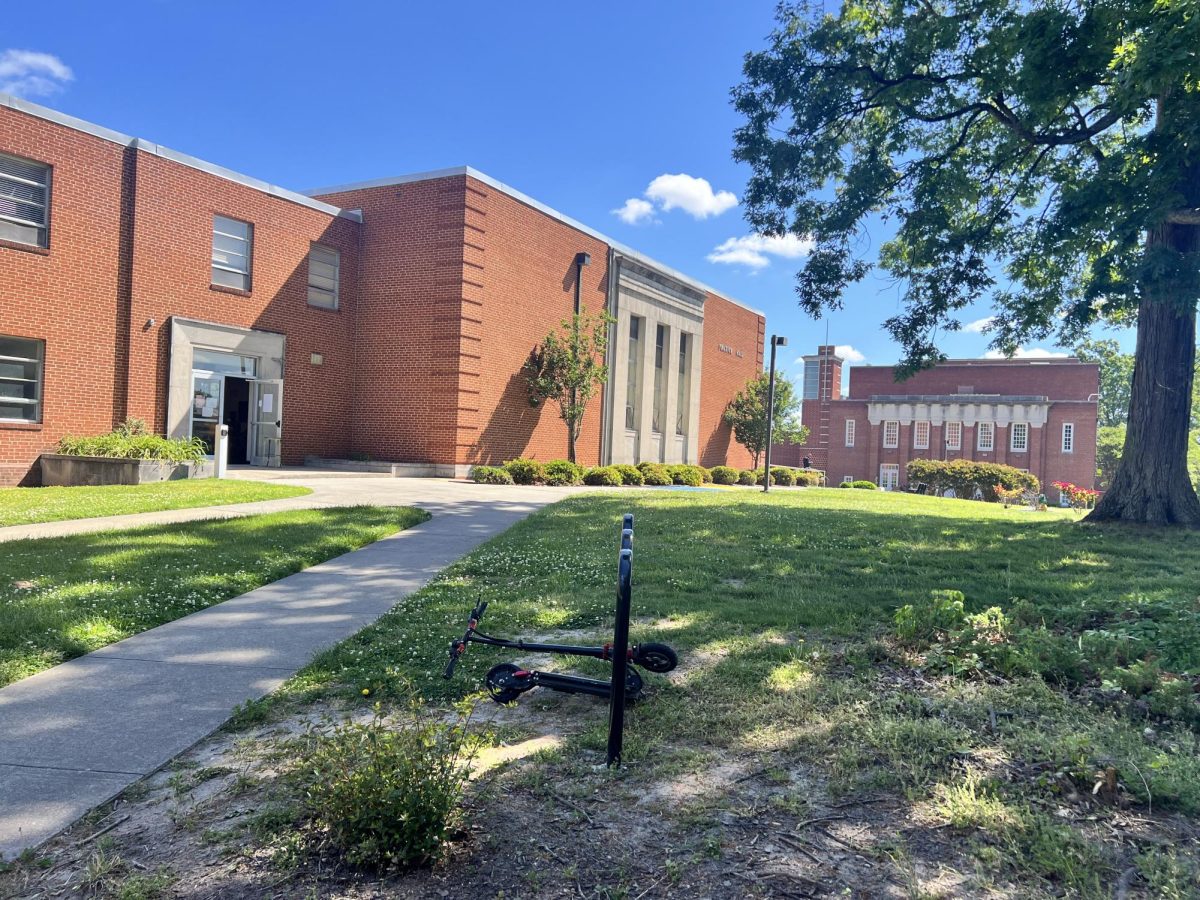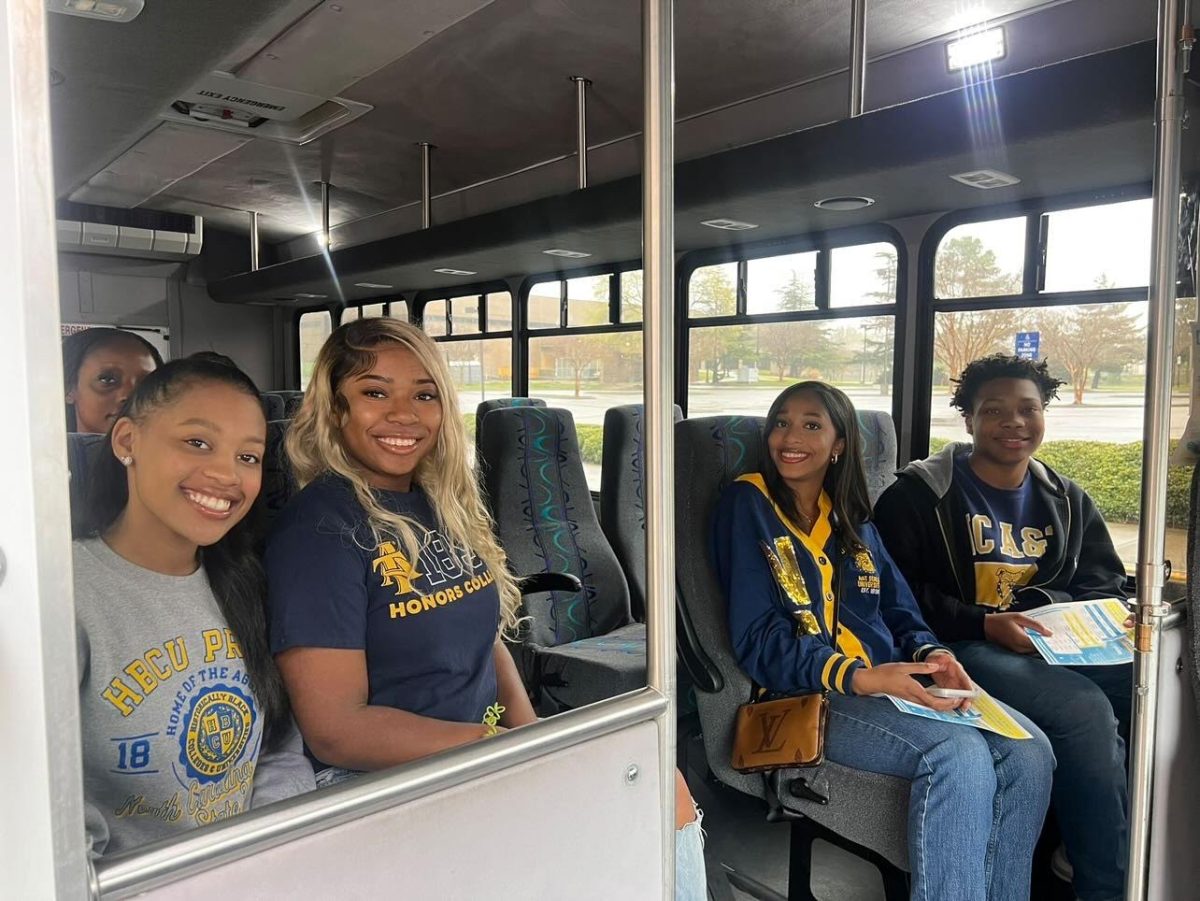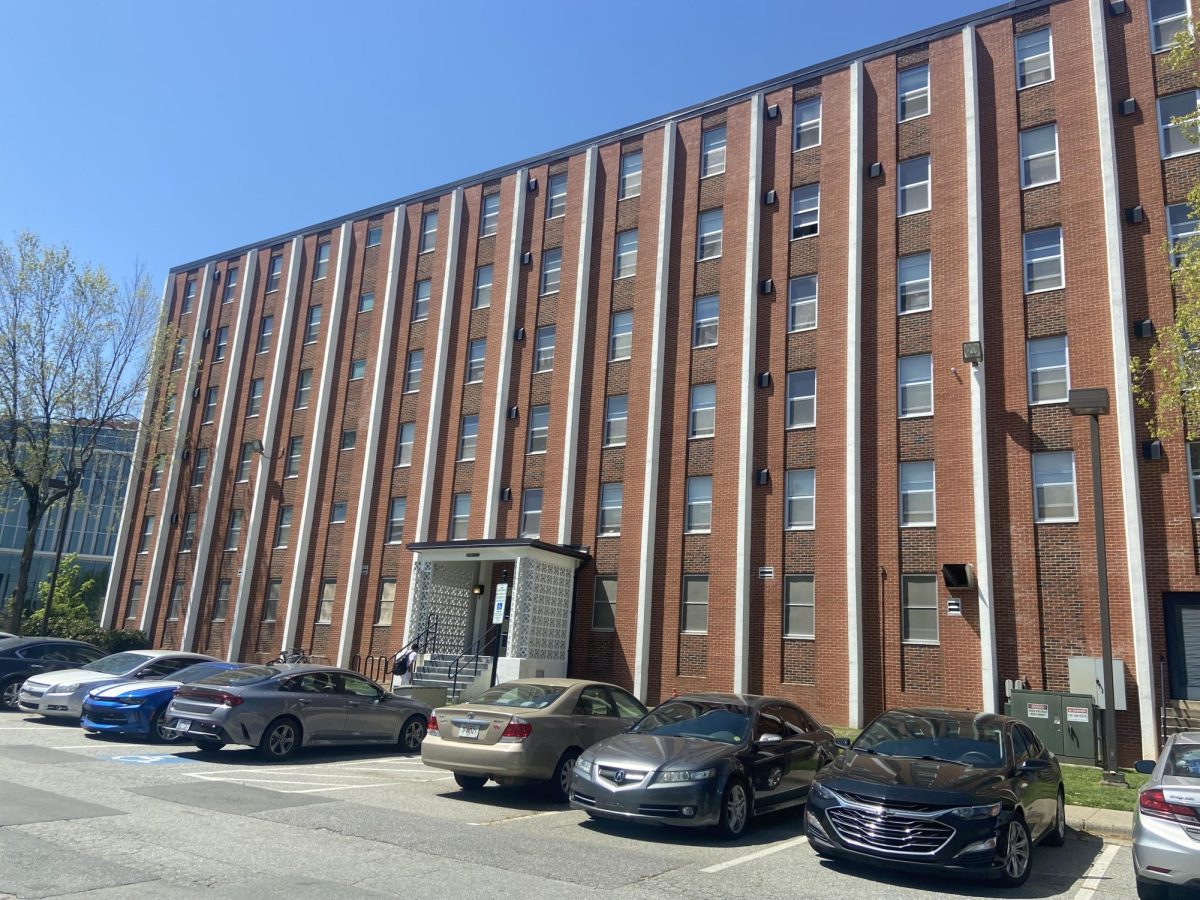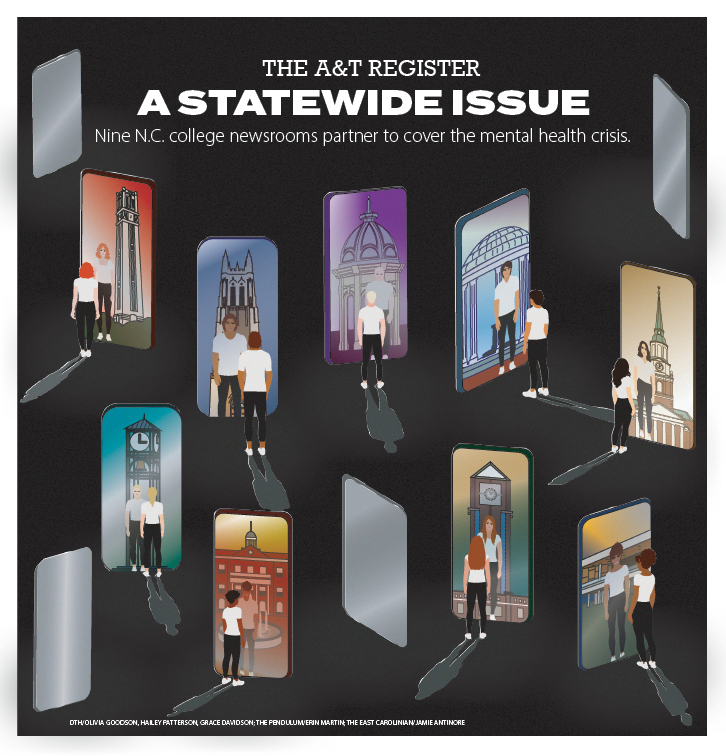Imagine walking around A&T and not seeing the General Classroom Buildings cast a shadow along Benbow Road. Imagine the Memorial Student Union without the ‘Sit In.’ Imagine Williams Cafeteria without Pizza Hut or Krispy Kremes. Imagine no Aggie Village, no Pride Hall, no New Fitness Center, no New Science Building, and no roundabout. Ten years ago, that was no imaginary scenario for A&T.
After taking a walk around campus in the present day, one theme is now apparently synonymous throughout – construction. The sounds of machines drilling that seem to drown out the usual chatter of students between classes are the norm. The dust from all of the digging, which would usually lower visibility, has become an accepted reality. The smells that are common with construction are thick at certain locations.
All of this has been for the progression of ‘Aggie Land.’ But with the economic recession hitting as hard as it has, the price of that progression may be costing more than it seems at face value.
“The ongoing big construction projects that you see now, we will continue to complete,” said Vice Chancellor for Business and Finance, Robert Pompey. “What will happen in the future, if we’re having cuts, the amount of money that’s available to do the renovations and to keep it as nicely as we want to keep it; some of those things may suffer. One of the potential impacts of this budget cut is that we may not be getting as much money for repairs and renovations to continue to keep it as nicely.”
In the short-term, that could mean not being able to put a replacement chiller unit in Marteena Hall, or having to paint academic classrooms every three years as opposed to every two.
The University currently relies upon money from the legislature in terms of repair and renovation dollars on an annual basis to help support the continued operation of the University in addition to the general funds. In the long-term, it appears that will no longer happen. If that does not happen in one to two years, A&T may have to do some additional belt-tightening to continue to run a very robust renovation program that began in 1999.
In November of last year, the University began looking at how to reduce its expenditures. Instead of going downtown and buying repair parts, workers are now encouraged to get them from A&T’s storage area. Doing that has helped reduced budget impacts by nearly 25 percent.
“In our construction program, however, we’re not as dyer because we have been approved by the previous governor’s stimulus package in which we have a new academic classroom building funded,” said Assistant Vice Chancellor for Facilities, Andrew Perkins. “It’s going to go right beside the School of Education. It’s going to be a 100,000 square foot facility dedicated to instructional capacity for the student population. It will be the home for the
Honors Program and the University Studies Department.”The New General Classroom Building C is centrally located on campus, standing on the west side of the New Education Building and the east side of the Obermeyer Parking Deck. The $20 million dollar project should be going up in June of this year. The bidding for a general contractor is anticipated to open up on the 9th of this month.
Progress, however, does not only hold a price economically, but environmentally as well. Every building built and every renovation made consumes power and water. In recognition of this, the Leadership in Energy and Environmental Design (LEED) Green Building Rating System must certify facilities constructed by the University, such as the New General Classroom Building C. LEED, according to the United States Green Building Council, is a nationally accepted benchmark for the design, construction, and operation of high-performance green buildings.
Reducing utility costs, oil usage, and steam usage are some of the ways in which the University plans to reduce its total consumption of energy. That means installing light sensors in every building that is new or renovated so within 15 to 20 seconds the lights cut out. Replacing the median temperature on the steam lines that are already in place, so that in the winter buildings are at 68 degrees instead of 72. Those little things, Perkins claims, will help make the difference.
“We think that every building and every renovation that we do, we need to look at smart ways to reduce the consumption of power and to reduce the consumption of water,” said Perkins. “When we design buildings, we want them to be green. We want to find ways to build into the new facilities we have with green opportunities. The new academic building and the JSNE are going to be LEED certified.”
The Joint School of Nano-Science and Engineering (JSNE) building will be on the south campus of the Gateway University Research Park, a joint venture between A&T and UNC-Greensboro. Originally called the Millennium Campus when it was envisioned with the campus Master Plan in 1999.
The south campus, home of the first building in the project, will also have buildings in conjunction with the School of Agriculture and house offices from the United States Department of Agriculture. In addition, there will be a joint data center to support both universities. The three principle buildings should begin production in the next 24 months.
The north campus, as of now, will host some of the smaller programs.Within the next month, the most obvious project on campus, the Laurel Street construction in front of Bluford Library, should be coming to a close. The University is installing new steam lines. The interconnected pipelines that lie underground give buildings heat and hot water. The source of the steam is the chimney on the other side of East Market Street emblazoned with the words ‘Aggie Land.’ Some of the steam lines have not been touched in nearly a quarter of a century.
“If you remember in front of the library looked like a war zone with the steam,” said Project Manager Shaban Kaji. “The problem was these steam lines had holes in them due to old age and corrosion. I don’t think this has ever been replaced. The problem is you can due minor repairing, but it’s like a band-aid. We anticipate the project to be completed somewhere around April 20th. But the condition that we’ve had with the rain pushes us back. The cost is about a million dollars. Also, when you’re doing a project like this, a lot of change orders happen because when you’re digging in the middle of a public street, you really don’t know what kind of utilities you’re going to hit.”
Over the next few years, students can expect to see the face of A&T change even more dramatically.
In the same vicinity as the New General Classroom Building is the planned Bell Tower inside of the circle in the roundabout. Several designs have been presented to the Alumni Director and Foundation Director to help encourage money to be raised because the state does not fund non-academic projects. When the Bell Tower is finished, the Master Plan that was envisioned in 1999 will be completed.
The school of engineering is planning to build a new graduate engineering building, adjacent to the existing engineering building. It would be designed to support the graduate program with conference rooms and classrooms.
The Project Management team is also working very closely with the Vice Chancellor for Student Affairs, Sullivan Welborne, to completely renovate the old section of the Memorial Student Union, and bring it up to par with the addition that was put in place six years ago. That project could potentially reach $7 million dollars.
“We’re also looking to build a new Sebastian Health Center for about four or five million,” said Perkins. “We want to replace that one because we think that it’s woefully inadequate. So we plan to put that one, hopefully adjacent to where the Alumni Event Center is, in the area where the orange tape is around. We think we may be able to put that there.”
Perkins also stated that a proposal has gone to the Chancellor to put a Performing Arts Center and a new Brown Hall.
The Chancellor has yet to accept the proposal because of the National Science Foundation’s $18 million dollar grant to establish an Engineering Research Center. For that reason, the project is the number one priority in the coming years.
All of this construction in the future will eventually lead to an inevitable campus expansion. The beginning of that expansion has already begun along Bluford Street.
“We want to go down the street and turn the corner so we can secure that whole block,” said Real Property Agent James Griffin. “Initially, it will probably be used as parking. The ones that are boarded up are already purchased. We have about two or three others within that block that are in the process of being purchased. Back in ‘99, engineers came up with a Master Plan, so we can only purchase as money becomes available. We started last year, kind of picking them up as they became available.
The parking lot is the short-term thing; the long-term really has not been decided yet. By the time students come back from summer break, those houses won’t be there.”
The price of A&T’s progress over the years has certainly contributed to the campus’ growth from buildings in a residential area to a state-of-the-art institution.
In the whirlwind of the most significant economic challenge for the nation in decades, Perkins believes that they have overcome the odds and sees a little light at the end of the tunnel.
“I came here in February of 1999. I am absolutely heart-warmed about the team that we were able to assemble to help us realize the vision in 1999 to bring it to fruition in 2009,” said Perkins. We have made marvelous projects.
“I owe this to the 290 people who wake up every day looking for new and innovative ways to improve the students, faculty, and staff’s life on this campus. When it comes to our facilities, we don’t have to bow our heads to anyone in the country.”
- Malcolm S. Eustache

